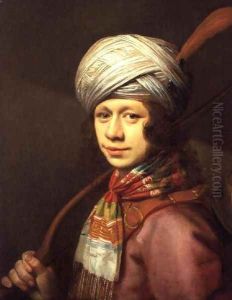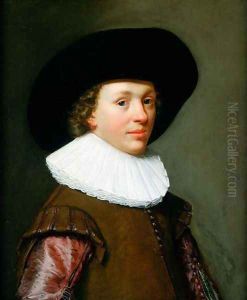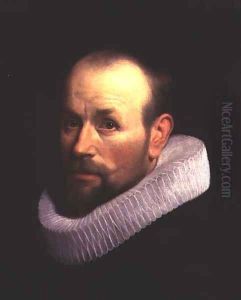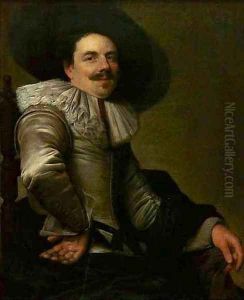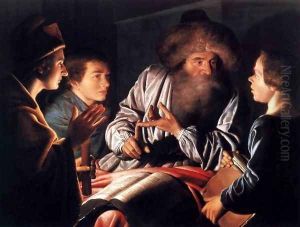Willem Willemsz. van der Vliet Paintings
Willem Willemsz. van der Vliet was a Dutch painter active during the early 17th century, a period often referred to as the Dutch Golden Age. Born around 1584 in Delft, Netherlands, van der Vliet was part of a vibrant artistic community that included many notable figures of the era. While the exact details of his early life and training are not well-documented, it is known that he became a member of the Guild of Saint Luke in Delft in 1613, an organization that played a crucial role in the careers of artists at the time. His membership in the guild underscores his recognition as a professional artist and his active participation in the artistic life of Delft.
Van der Vliet's oeuvre primarily consists of portraits and religious scenes, although he is also known to have produced genre scenes that captured the everyday life of his contemporaries. His work is characterized by meticulous attention to detail, a keen eye for composition, and the use of light and shadow to create depth and atmosphere. Despite the high quality of his paintings, Willem Willemsz. van der Vliet did not achieve the same level of fame as some of his contemporaries, such as Johannes Vermeer or Carel Fabritius, who are today celebrated as masters of Dutch painting. Nonetheless, his contributions to the Dutch Golden Age of painting are significant, providing insight into the cultural and religious life of the period.
Van der Vliet's religious paintings often reflected the Calvinist ethos of the Dutch Republic, depicting biblical scenes with a focus on moral lessons and piety. His portraits, on the other hand, reveal the social status and personal identities of his subjects, ranging from wealthy burghers to prominent civic leaders. These works not only showcase his skill as a painter but also serve as valuable historical documents that offer a glimpse into the society of 17th-century Delft.
Willem Willemsz. van der Vliet's death in 1642 marked the end of a career that contributed to the rich tapestry of Dutch art. Although he may not be as widely recognized as some of his peers, his paintings remain appreciated by art historians and collectors for their beauty and historical value. Today, his works can be found in various museums and collections, where they continue to be studied and admired for their craftsmanship and insight into the Dutch Golden Age.
